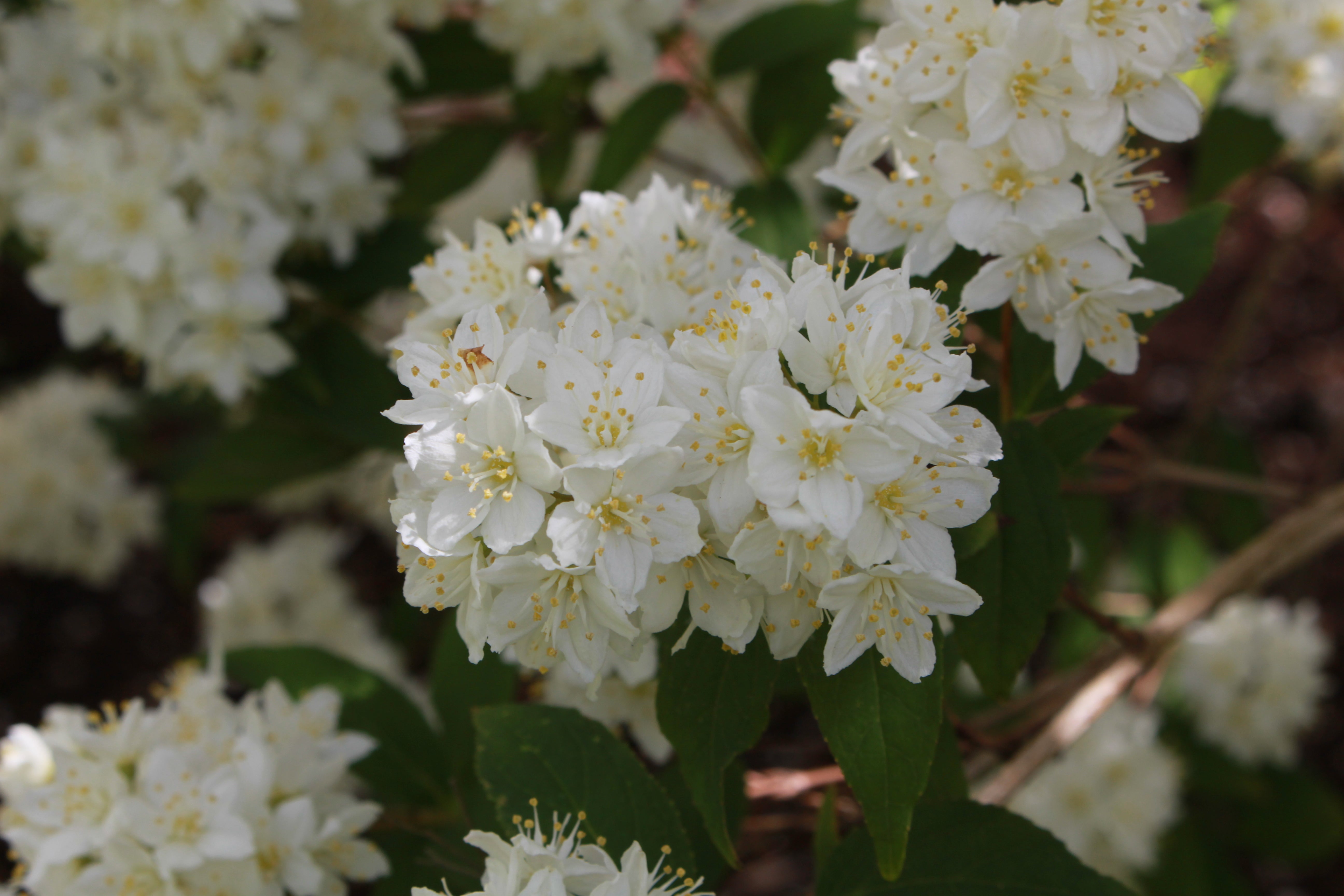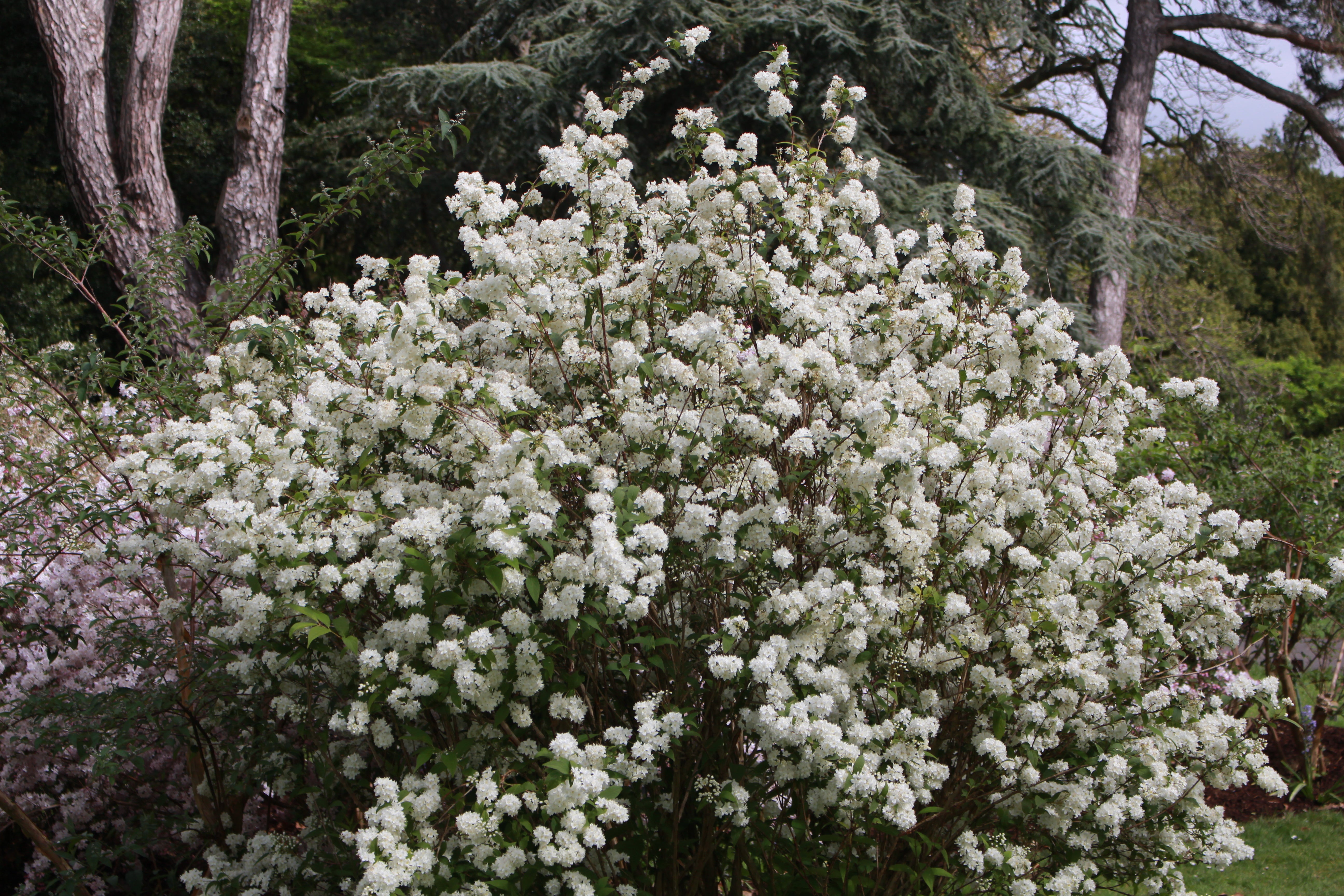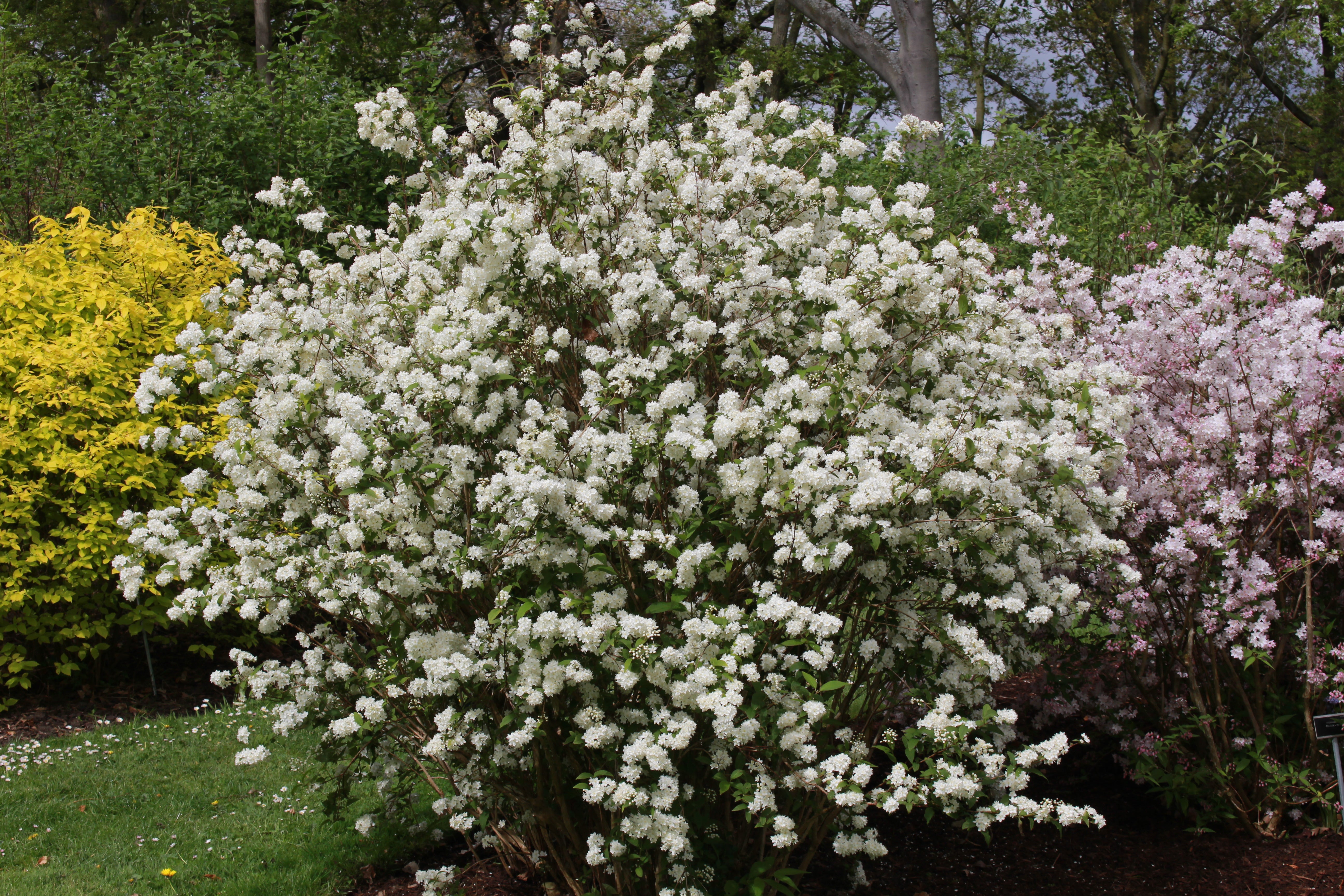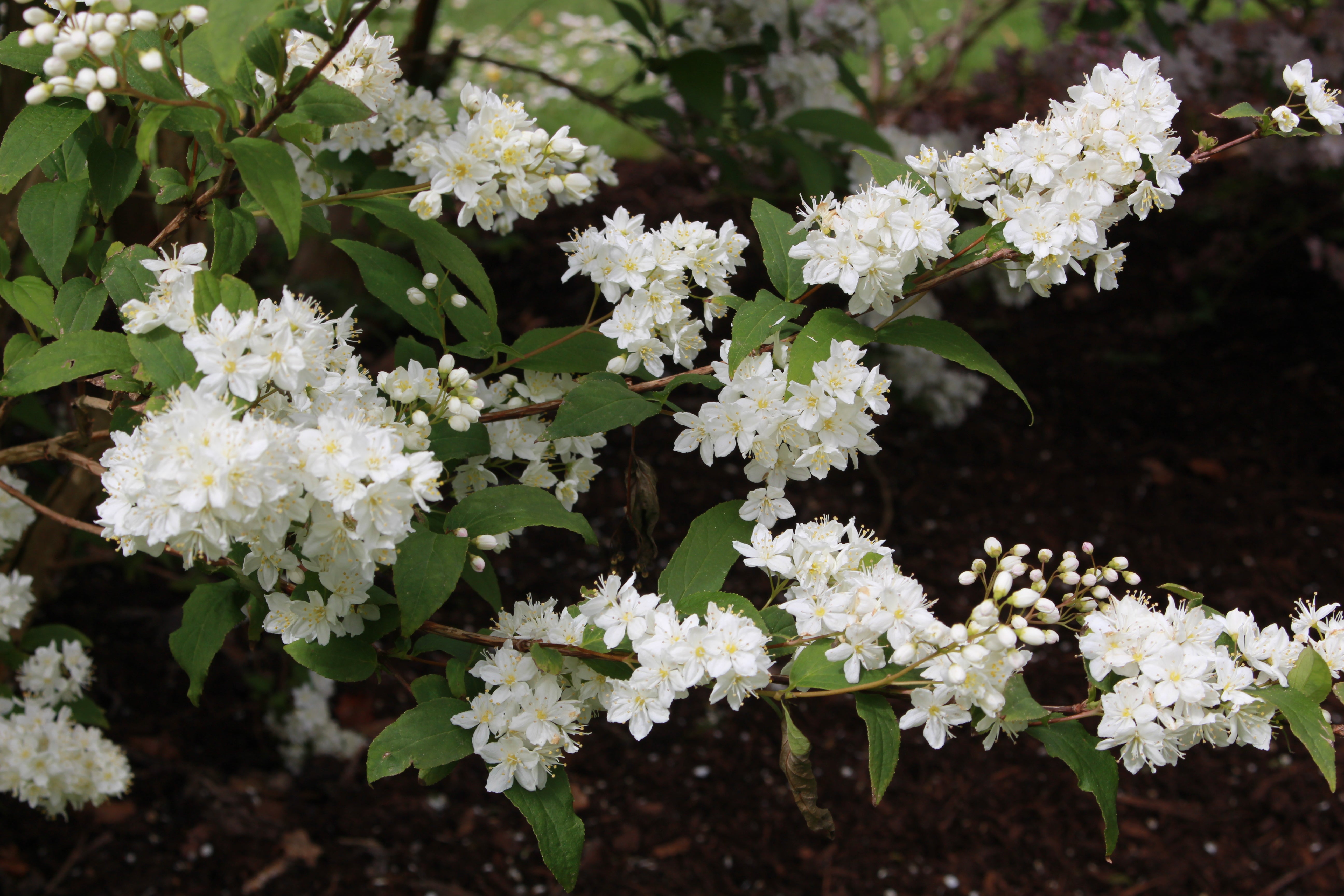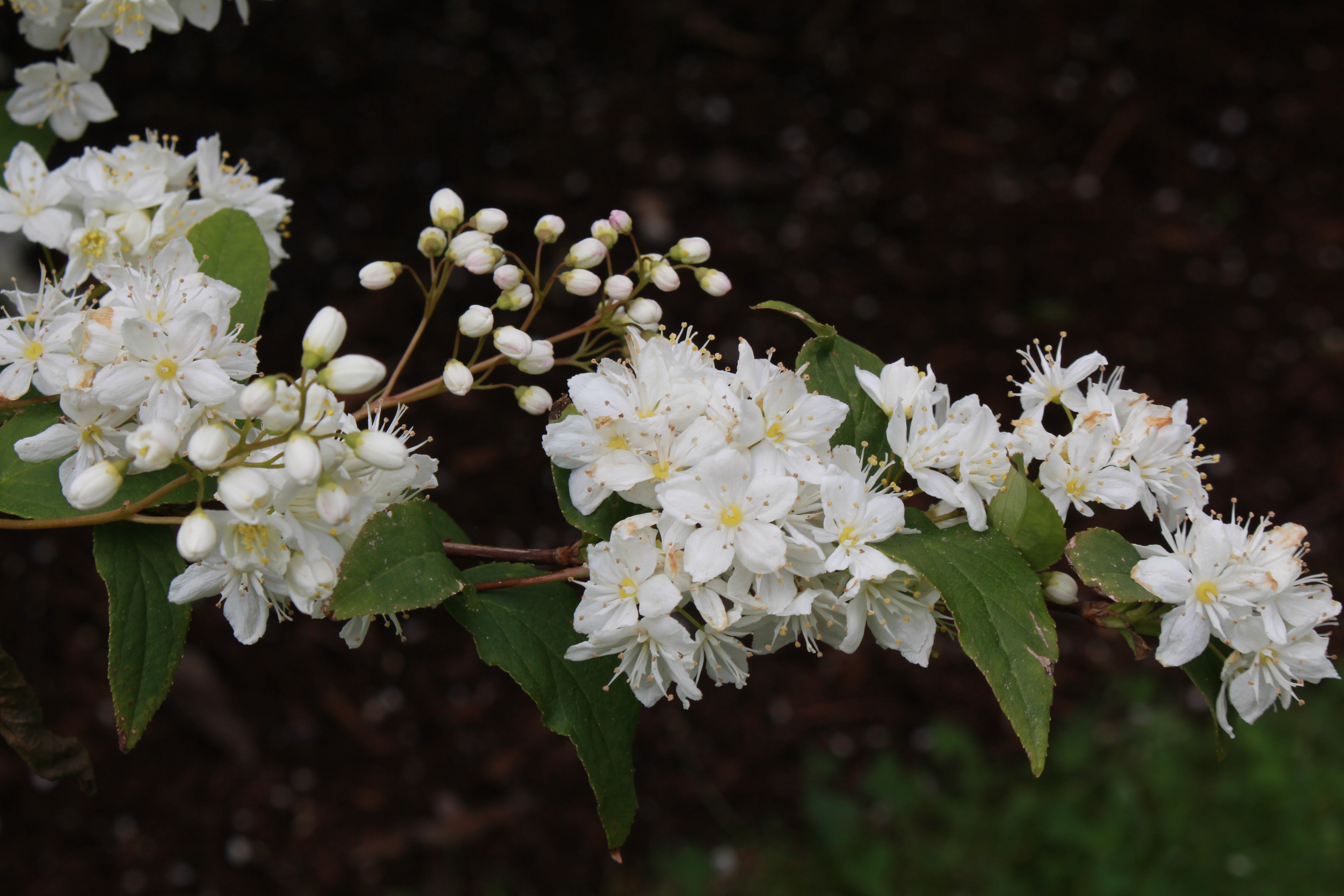Deutzia x lemoinei
Approx. 0.5 litre pot
About this cultivar:
Deutzia x lemoinei is the result of a cross between Deutzia gracilis and Deutzia parviflora. Tiny white flowers appear in late spring in large panicles or corymbs which cover the shrub for weeks. Opposite, toothed, long-pointed, elliptic to lanceolate, green leaves are hairy beneath.
The hybrid name lemoinei honors Victor Lemoine (1823-1911), French nurseryman who introduced this plant in 1891 from his nurseries at Nancy, France.
- Position: Full sun, partial shade
- Soil: Almost any soil, grows well in Ballyrobert
- Flowers: May, June
- Other features: Grows well in Ballyrobert
- Hardiness: Fully hardy, grows well in Ballyrobert, H5 - Hardy in most places throughout the UK even in severe winters (-15 to -10°C)
- Habit: Clump forming, bushy
- Foliage: Deciduous
- Height: 150 - 200 cm (5 - 7 ft)
- Spread: 150 - 200 cm (5 - 7 ft)
- Time to full growth: 5 to 10 years
- Plant type: Herbaceous Perennial, shrub
- Colour: Green, white, pink
- Goes well with: -
About this genus:
Deutzia is a genus of about 60 species of flowering plants in the Hydrangea family (Hydrangeaceae) native to eastern Asia, central Asia, central America, and Europe. By far the highest species diversity is in China, where 50 species occur. The genus is named after the 18th century Dutch patron of botany, Johann van der Deutz. Johann financed the Asian travels of the Swedish botanist Carl Peter Thunberg (who subsequently named this genus after him). I used to pronounce it doots-e-ahh, but i think it is doyts-e-a.
The species are shrubs ranging from waist-height to small-tree-height. Most are deciduous, but a few subtropical species are evergreen. The leaves are opposite, simple, with a serrated margin. The flowers are mostly produced in panicles, white in most species, sometimes pink or reddish. The fruit is a dry capsule containing numerous small seeds. Identification of the species is very difficult so prepare for some DNA research changing the names soon…
It is quite a new genus to western gardens. According to Alice M. Coats in ‘Garden Shrubs and Their Histories’ (1964) two-thirds of Deutzia species known to the RHS were gathered from the wild during the 20th century. However, Deutzia scabra was noticed in Japanese gardens by Engelbert Kaempfer as early as 1712 (but not actually seen in Europe till the 1830s).
When not in flower, Deutzia are often described as having a rather unkempt appearance, particularly if not regularly pruned, but this is part of their charm! Deutzias are great ornamental plants and already many of the newly discovered species are garden favourites. There are numerous fine Deutzia species and varieties, which add masses of colour to the garden in spring and summer. They require little special attention – all are hardy shrubs capable of thriving in most soils and aspects. Perfect for growing as a specimen shrub in a mixed or shrub border, especially for small gardens.

